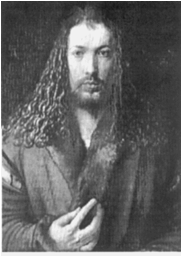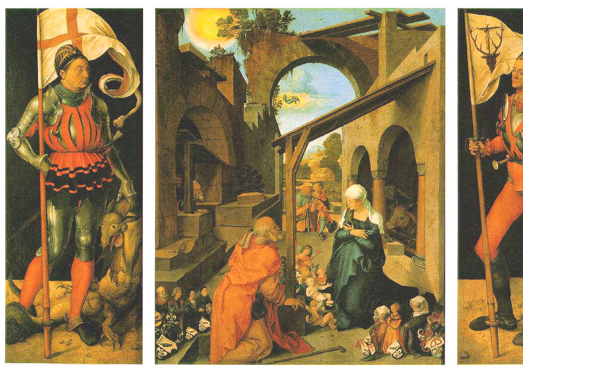
Grade 10 | Lesson 8
Dean of Students: dean@theschools.com
Tech Services: tech@theschools.com

Grade 10 | Lesson 8
Dean of Students: dean@theschools.com
Tech Services: tech@theschools.com
Fine Arts
Lesson Overview
Global Art Connections I
• The Baroque
Making Art!
![]()
Global Art Connections I
The Baroque
The Baroque is the 1500-1700 European period. Riding on the coat-tails of the Renaissance, many called it the Decadence in its time. The spark that really set this period off was that using the brilliant techniques gained in the Renaissance, the Baroque painters used them in some seemingly unreal manners to achieve incredible results.
Rembrandt, the most famous of the period, used a majestic sense of lighting, color and dimensions that made scenes seem more than realistically possible.
Others, such as Durer, though typically not recognized for being anything more than a glorified copier of nature in a cold and calculated style, is however incredible for his unbelievable detailed engravings that seems to be almost completely separated from any human emotions, its as if the metal pressed lines themselves are growling.
Albrecht Druer, perhaps the greatest German artist of the Renaissance era, began his career in the Imperial Free City of Nuernberg with his father, a Hungarian goldsmith who had emigrated to Germany in 1455. Despite his goldsmith origins, however, by 1484 Durer had already begun painting. In 1486 he was apprenticed to the painter and printmaker Michael Wolgumut and began to work with woodcuts and copper engravings as well.
Beginning in 1490 Durer travelled widely for study, including trips to Italy in 1494 and 1505-7 and to Antwerp and the Low Countries in 1520-1. During his visit to Venice on his second Italian trip Durer was especially influenced by Giovanni Bellini and Bellini’s brother-in-law Andrea Mantegna, each then near the end of his career. In The Uffizi: A Guide to the Gallery (Venice: Edizione Storti, 1980, p. 57) Umberto Fortis comments that Durer’s journeys enabled him "to fuse the Gothic traditions of the North with the achievements in perspective, volumetric and plastic handling of forms, and color of the Italians in an original synthesis which was to have great influence with the Italian Mannerists."

The Paumgartner Altarpiece
The period between his Italian trips was one of great productivity and artistic growth, characterized by his publication, 1496-8, of a portfolio of woodcuts, The Apocalypse of St.John. Scholars have suggested that the portfolio may have been intended as a veiled expression of support for the Reformation, with Babylon used as a surrogate for Rome.
Beginning at least as early as 1512, Durer became portraitist to the rich and famous of his time, including Emperor Maximilian I, c. 1518, and Christian II of Denmark, 1521. Other sitters included Jacob Fugger and other prominent merchants, clergy and government officials. An early chalk and watercolor painting, now lost, of Queen Caterina Cornaro (B-31) following her surrender of her throne in Cyprus and retirement to her native Venice. Shown here are Durer’s own self-portraits at ages 22, 26 and 28 (now in the collections of the Louvre, Prado and Alte Pinakothek of Munich).
Durer expressed his theories on proportion in The Four Books on Human Proportions, published posthumously in 1528.
![]()
Making Art!
For this making art, you'll complete, in a way, the Monet torn paper piece you made in lesson 5. Remember that 2" border around the edge? Now it's time to fill it in. What better way to edge your work than with an ornate Baroque border/frame. After studying the Baroque, you should be familiar with the intricacies of the designs of that period. Make some sketches, figure out a pattern, trace if you like in pencil and then use pen or marker to meticulously border your Monet in the Baroque style.